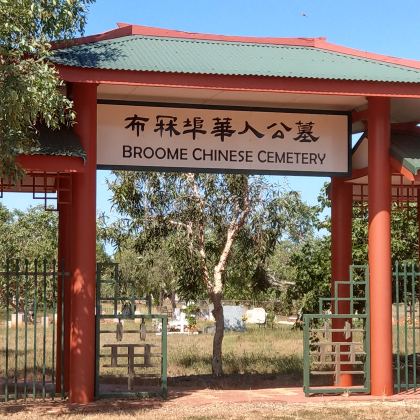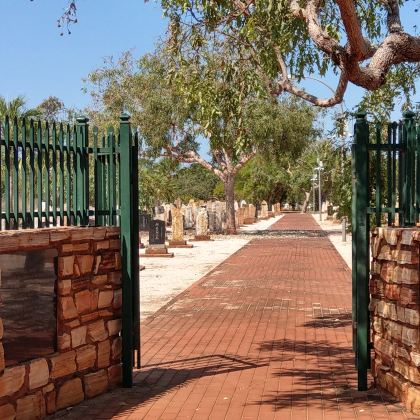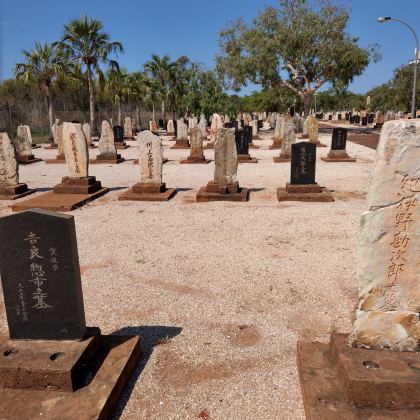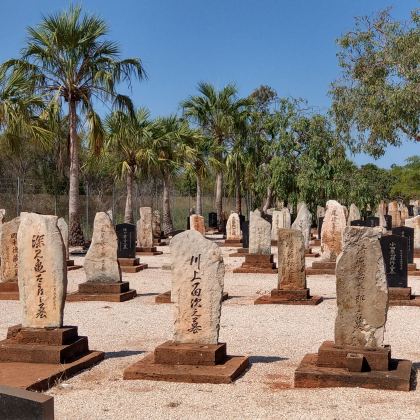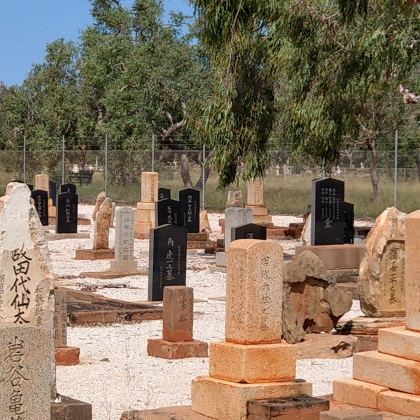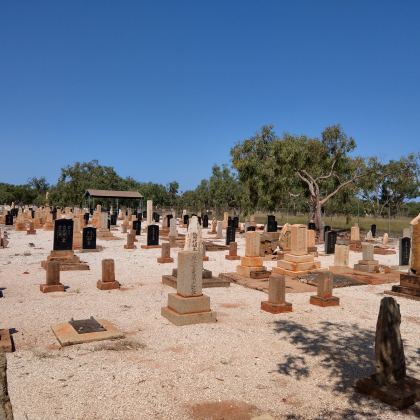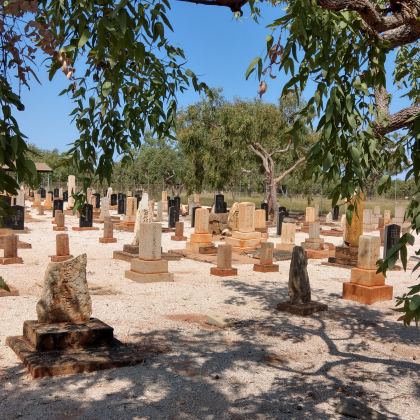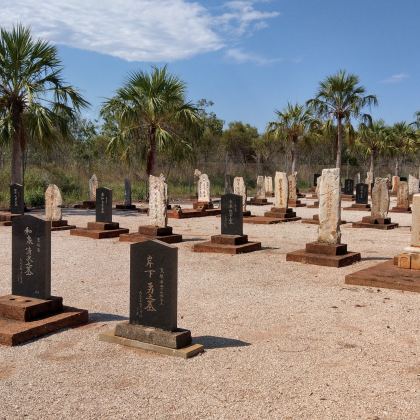
Broome's Japanese and Chinese Cemeteries
Gain an appreciation for the lives sacrificed by the Asian migrants who settled in Broome to prosper from Broome’s lucrative pearling industry. The Japanese Cemetery in Broome is the largest Japanese cemetery in Australia, and dates back to 1896. The Chinese Cemetery is found next to the Japanese Cemetery, and there is also a Muslim cemetery with many graves of Malay divers who contributed to the pearling boom in the late 19th and early 20th centuries. There is also an Aboriginal cemetery 50 metres south of the Japanese cemetery.
Reflect on the diverse multicultural history of Broome as you wander amongst the hundreds of graves, with unique headstones crafted out of coloured beach rocks.
This immaculately restored heritage icon is an integral stop on your historic tour of Broome. The sheer enormity of the number of deaths in the early pearling days resonates from this poignant tribute.
Pearl diving was a dangerous pursuit. A large stone obelisk in the cemetery recalls those who were drowned at sea in the 1908 cyclone. The cyclones of 1887 and 1935 each caused the deaths of at least 140 men. The majority of deaths commemorated in the cemetery resulted from the bends or drowning.
The cemetery is on Port Drive, midway between old Broome town and nearby Cable Beach. Entrance is free. Opening time is usually 6:45am and closure at 7:45 pm. Times may vary seasonally.
Learn about the history of Broome's pearling industry before you visit with a pearling tour or paying a visit to our local museum. Pop into the Broome Visitor Centre to discover more about the history of Broome.
